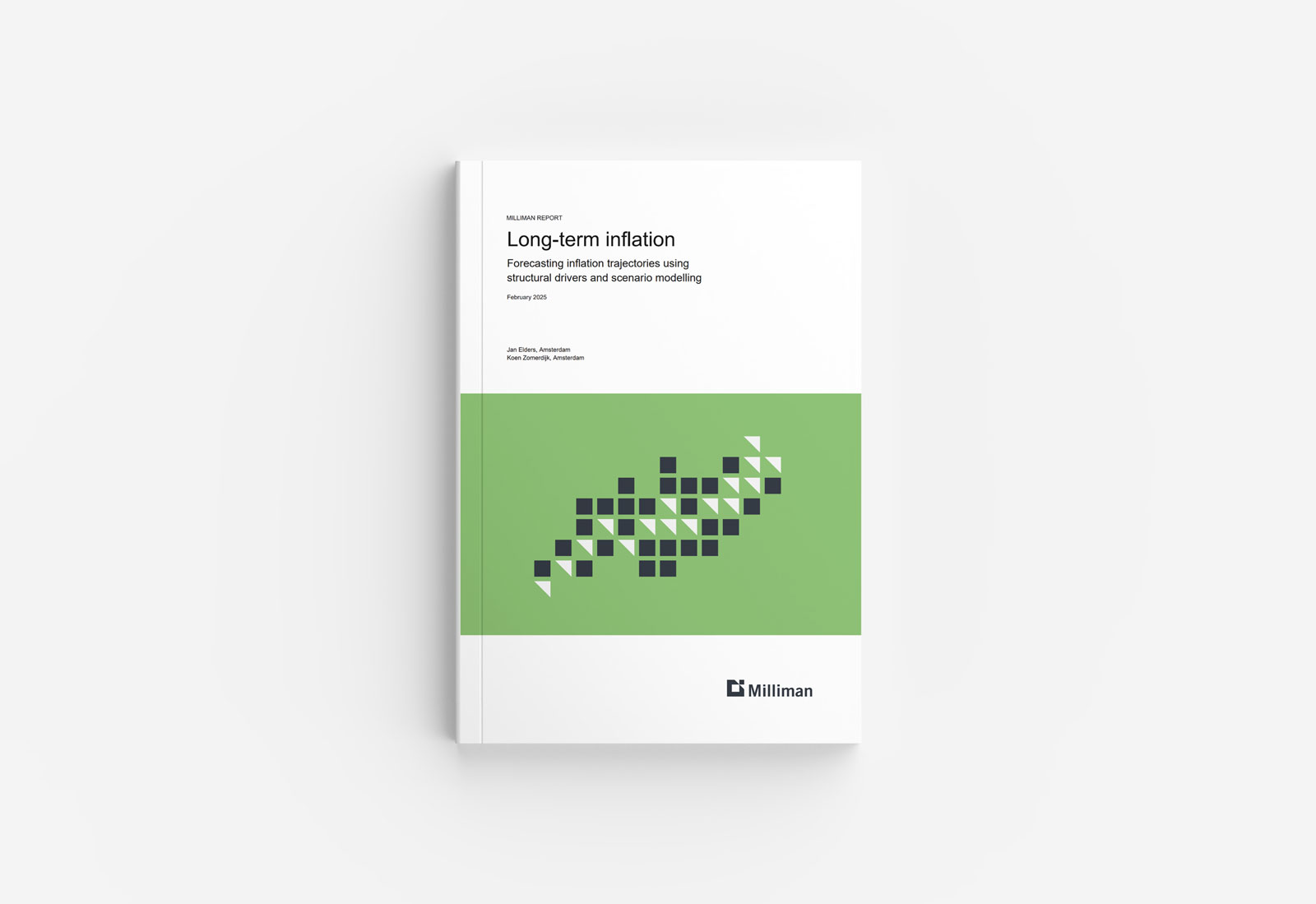Throughout the 2010s, inflation often fell below the 2% target set by the European Central Bank (ECB). But in 2021, inflation re-emerged as a significant challenge in most advanced economies around the world. While initially driven by the lingering effects of the COVID-19 pandemic, and exacerbated by the 2022 invasion of Ukraine, continued high inflation has spurred a global shift in monetary policy and a rise in interest rates.
Amid this continuing trend, Milliman’s new report explores the ECB’s response and the ways its strategies may evolve in the face of long-term inflationary pressures. The research also considers how climate policies and shifting demographics drive inflation, and how persistent high inflation rates may affect life and non-life insurance companies across the Eurozone through 2050 and beyond.
Scroll down for highlights, and download the full report for details.
Why insurers are vulnerable to interest rate movements
Many insurers rely on economic models built on a stable 2% inflation regime. But with rates now consistently above that level, life and non-life insurers may experience a significant impact on their asset-liability management, pricing strategies, and capital adequacy planning.
Financial impact of elevated inflation:
Life insurers
Potential improvement in solvency position*
Higher operating expenses
Eroded gains from fixed income and inflation-linked investments
Volatility in equity and real estate holdings
Non-life insurers
Limited solvency benefit
Higher operating expenses
Higher claim costs due to rising prices for repairs, healthcare, and materials
Inadequate reserves to cover long-tail liabilities
* Depending on interest rate movement and duration gap
Our research helps insurers understand the structural drivers of inflation so they can adjust their internal models and recalibrate their Own Risk and Solvency Assessment (ORSA) approach.
Download full reportHow will climate change and demographics affect Eurozone inflation?
Aging populations, shifting migration patterns, and new energy policies are among the structural drivers likely to have a profound effect on long-term inflation, as our scenario models illustrated.
Climate change


Demographic trends


Our projections include 15 scenarios that reflect varying combinations of demographic and climate policy pathways, and our findings point to key conclusions regarding inflationary targets, retirement age, and more.
Download full reportOur framework for analysing inflation trends in the Eurozone
The research used a linear regression model to analyse pressures on the delta inflation, emphasizing simplicity and interpretability. The model incorporates three primary components:
- A mean reversion component
- A demographic component
- A climate policy component
The full report shows the model performance and coefficients, data and scenarios, and more.
View the model performance and coefficients, data and scenarios, and more.
